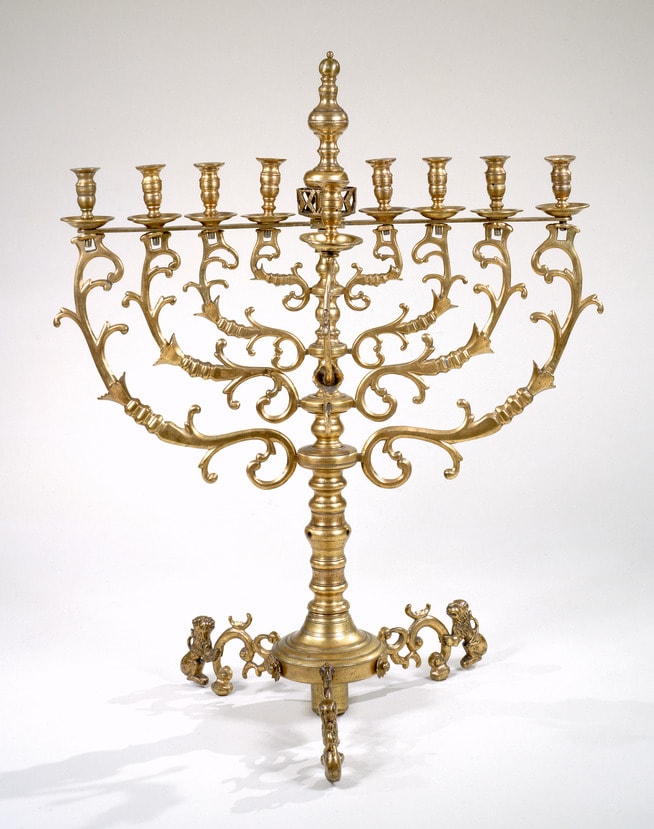
- Object Name:
- Hanukkah Lamp
- Place Made:
- Eastern Europe (?)
- Date:
- 18th-early 19th century
- Medium:
- Copper alloy: cast and gilded
- Dimensions:
- 44 5/16 × 37 13/16 × 20 11/16 in. (112.5 × 96 × 52.6 cm)
- Credit Line:
- Gift of Dr. Harry G. Friedman
- Accession Number:
- F 3481
Not On View
There was a tradition in Ashkenazi synagogues of placing a large menorah-form Hanukkah lamp near the Torah ark or reader's desk. Synagogues were perceived as small versions of the ancient Temple in Jerusalem, and the menorah served as a reminder of the lampstands that once flanked the entrance to the inner sanctuary (I Kings 7:49). The rabbis of the Talmudic period forbade exact replications of the Temple and its implements, but allowed a menorah as long as it did not have seven branches. Thus, Hanukkah menorot in synagogues had a dual function: to publicize the miracle to the congregation and travelers, and to remind them of the Temple.
The ornate scrolls, flowers, and lion feet on this lamp are characteristic of eastern European synagogue lamps and argue for an origin in that region. This example has beautifully designed arms with three-dimensional flowers that are part of the casting and were more difficult to execute than the attached flowers of many eastern European synagogue menorot. The copper alloy has been gilded, a method of surface treatment called ormolu. This was commonly employed in Europe and the United States from the seventeenth to mid-nineteenth century in order to prevent tarnish.
The ornate scrolls, flowers, and lion feet on this lamp are characteristic of eastern European synagogue lamps and argue for an origin in that region. This example has beautifully designed arms with three-dimensional flowers that are part of the casting and were more difficult to execute than the attached flowers of many eastern European synagogue menorot. The copper alloy has been gilded, a method of surface treatment called ormolu. This was commonly employed in Europe and the United States from the seventeenth to mid-nineteenth century in order to prevent tarnish.
Information may change as a result of ongoing research.